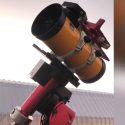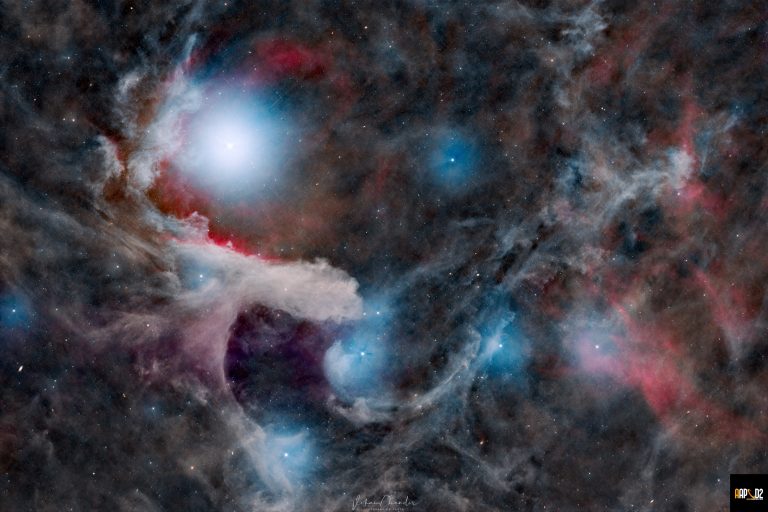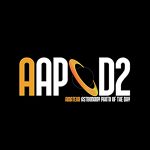Vikas Chander Astrophotography
Sh2-1
in Scorpious
Telescope : Takahashi E160ed
Camera : ASI ZWO 6200mm Pro
Mount : Software Bisque Paramount MX+
Focal length : 528mm
Fov : 234 x 156 arcmins
Image Scale : 1.47 arcsec/pixel
Observatory : Deep Sky Chile
Filters: Astronomik
R 60x3m G 60x3m B 60x3m
Ha 60x5m
Integration: 29h20m 2 panel mosaic
RA: 15h56m06s
Dec : -25°13′00″

Cosmic dust clouds dim the light of background stars. But they also reflect the light of stars nearby. Since bright stars tend to radiate strongly in the blue portion of the visible spectrum, and the interstellar dust scatters blue light more strongly than red, the dusty reflection nebulae tend to be blue. Lovely examples are the wispy blue reflection nebulae near bright, hot stars Pi and Delta Scorpii in this telescopic skyscape from the head of the constellation Scorpius. Of course, the contrasting red emission nebulae are also caused by the hot stars' energetic radiation. Ultraviolet photons ionize hydrogen atoms in the interstellar clouds producing the characteristic red hydrogen alpha emission line as the electrons recombine. About 600 light-years away, the nebulae are found in the second version of the Sharpless Catalog as Sh2-1.
© Vikas Chander All rights reserved Copyrights

